Originally cultivated in the Mediterranean and the Middle East, chickpeas, also known as garbanzo beans, have spread their culinary influence to areas all over the world. They are featured prominently in Italian, Greek, Indian, Middle Eastern, Spanish and Portuguese cuisine.
Though the most common type of chickpea appears round and beige, other varieties include colors such as black, green, and red. Like other legumes such as beans, peas and lentils, chickpeas are prized for their high protein and fiber content, and also contain several key vitamins and minerals known to benefit human health.
[wp_ad_camp_1]
Health Benefits of Consuming Chickpeas
Chickpeas have been associated with a number of possible health benefits for medical conditions. We will go through each condition one at a time.
1) Diabetes
Studies have shown that type 1 diabetics who consume high-fiber diets have lower blood glucose levels and type 2 diabetics may have improved blood sugar, lipids and insulin levels.
The Dietary Guidelines for Americans recommends 21-25 grams of fiber per day for women and 30-38 grams per day for men.
2) Bone Health
The iron, phosphate, calcium, magnesium, manganese, zinc and vitamin K content present in chickpeas all contribute to building and maintaining bone structure and strength.
Though phosphate and calcium are both important in bone structure, the careful balance of the two minerals is necessary for proper bone mineralization – consumption of too much phosphorus with too little calcium intake can result in bone loss.
Bone matrix formation requires the mineral manganese, and iron and zinc play crucial roles in the production and maturation of collagen.
Low intakes of vitamin K have been associated with a higher risk for bone fracture. Adequate vitamin K consumption is important for good health, as it acts as a modifier of bone matrix proteins, improves calcium absorption and may reduce urinary excretion of calcium.
3) Blood Pressure
Maintaining a low-sodium intake is essential to lowering blood pressure, however increasing potassium intake may be just as important because of its vasodilation effects. According to the National Health and Nutrition Examination Survey, fewer than 2% of US adults meet the daily 4700 mg recommendation.
4) Heart Health
The high fiber, potassium, vitamin C and vitamin B-6 content, coupled with the lack of cholesterol found in chickpeas, all support heart health.
Chickpeas contain significant amounts of fiber, which helps lower the total amount of cholesterol in the blood, thereby decreasing the risk of heart disease.
In one study, those who consumed 4069 mg of potassium per day had a 49% lower risk of death from ischemic heart disease compared to those who consumed less potassium (about 1000 mg per day).
5) Cancer
Selenium is a mineral that is not present in most fruits and vegetables, but can be found in chickpeas. It plays a role in liver enzyme function, and helps detoxify some cancer-causing compounds in the body. Additionally, selenium prevents inflammation and also decreases tumor growth rates.
Chickpeas also contain folate, which plays a role in DNA synthesis and repair, thus preventing the formation of cancer cells from mutations in the DNA.
Saponins, which are phytochemicals present in chickpeas, prevent cancer cells from multiplying and spreading throughout the body.
6) Cholesterol
Research shows that including chickpeas in the diet lowers the amount of low-density lipoprotein (LDL) cholesterol in the blood.
7) Inflammation
Choline is a very important and versatile nutrient in chickpeas that help with sleep, muscle movement, learning and memory. Choline also helps to maintain the structure of cellular membranes, aids in the transmission of nerve impulses, assists in the absorption of fat and reduces chronic inflammation.3
8) Digestion and Regularity
Because of their high-fiber content, chickpeas help to prevent constipation and promote regularity for a healthy digestive tract.
9) Weight Management and Satiety
Dietary fibers are commonly recognized as important factors in weight management and loss by functioning as “bulking agents” in the digestive system. These compounds increase satiety and reduce appetite, making you feel fuller for longer and thereby lowering your overall calorie intake.
Consuming fruits and vegetables of all kinds has long been associated with a reduced risk of many lifestyle-related health conditions. Many studies have suggested that increasing consumption of plant foods like chickpeas decreases the risk of obesity and overall mortality, diabetes, heart disease and promotes a healthy complexion and hair, increased energy, overall lower weight.
Nutritional Breakdown of Chickpeas
One cup of cooked chickpeas contains 269 calories, 45 grams of carbohydrate, 15 grams of protein, 13 grams of dietary fiber, 4 grams of fat and 0 grams of cholesterol. A one-cup serving of raw chickpeas provides 50% of daily potassium needs, 2% vitamin A, 21% calcium, 13% vitamin C, 69% iron, 2% sodium, 55% vitamin B-6 and 57% magnesium. Additionally, chickpeas contain vitamin K, folate, phosphorus, zinc, copper, manganese, choline and selenium.
Besides being an excellent vegan and gluten-free source of protein and fiber, chickpeas also contain exceptional levels of iron, vitamin B-6 and magnesium.
Amino acids are the building blocks of proteins and are extremely important in ensuring that the body functions properly. Some, known as nonessential amino acids, can be produced by the body when they are needed. Essential amino acids, however, cannot be made in the body and, therefore, must be consumed in the diet.
Most non-animal sources of protein, including chickpeas, lack the essential amino acid methionine, while whole grains lack lysine. The combination of legumes with whole grains such as brown rice or whole-wheat bread or pasta produces a complete protein that contains all of the essential amino acids.
How to Incorporate More Chickpeas into Your Diet
Chickpeas are available year-round and are often found in grocery stores either dried and packaged or canned. They have a nutty flavor and buttery texture that allows them to be easily incorporated into any meal.
When preparing dried chickpeas, it is important to sort (pick out any small rocks or other debris that may have been wound up in the package), wash and soak them in water for about 8 to 10 hours before cooking in order to achieve optimum flavor and texture.
You can tell they are finished soaking when you can split them easily between your fingers. Be careful not to soak them for more than 12 hours, otherwise they become mushy and bland-tasting. Soaking dried legumes reduces the amount of time needed to cook them, and also helps remove some of the oligosaccharides that cause gastrointestinal distress. Once they are finished soaking, chickpeas are best cooked by simmering for a few hours until tender.

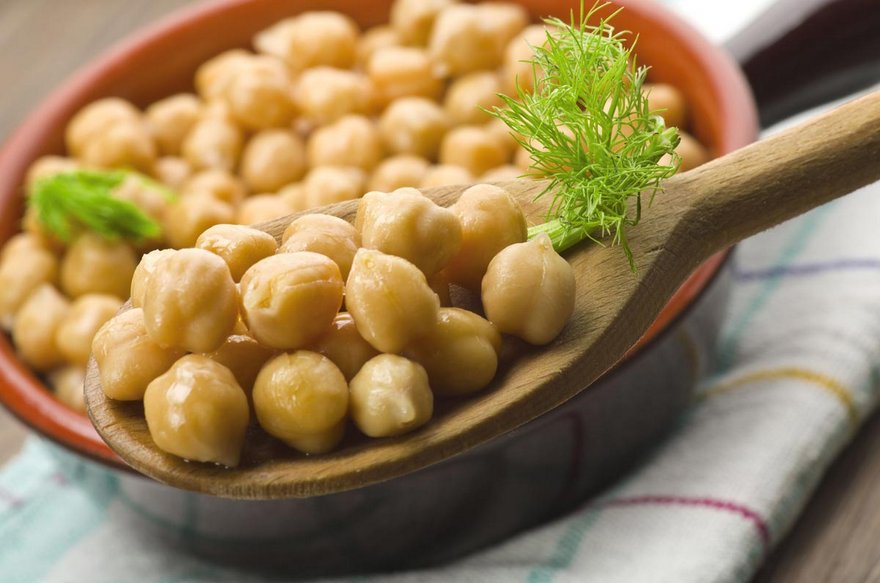
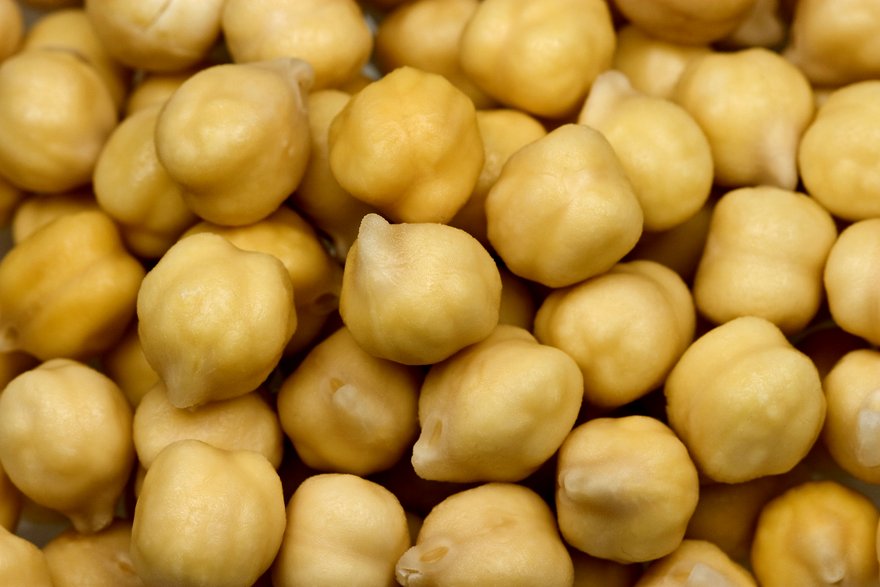
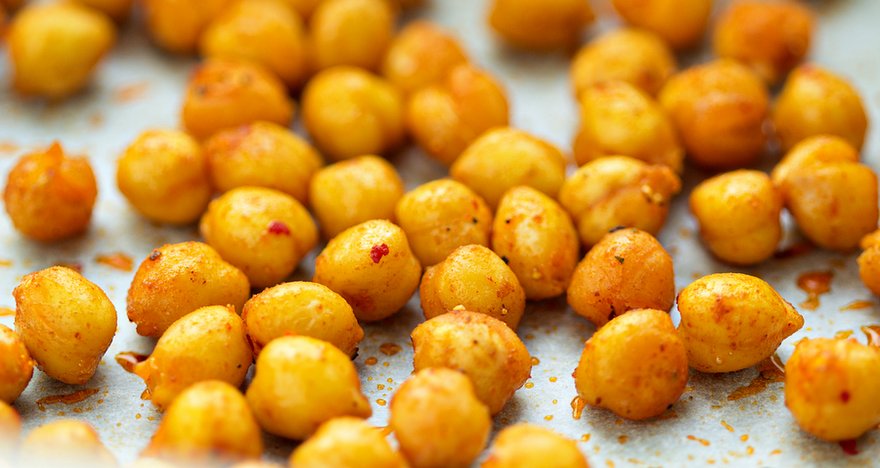
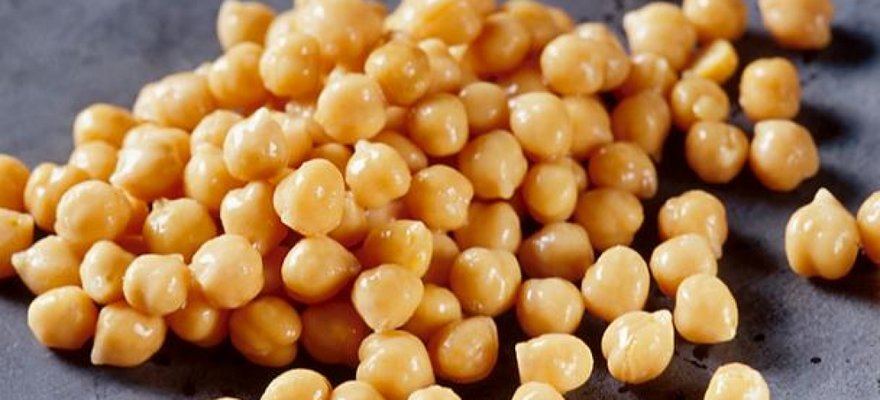
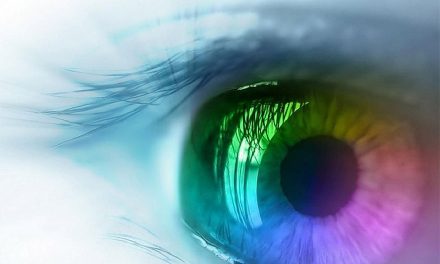

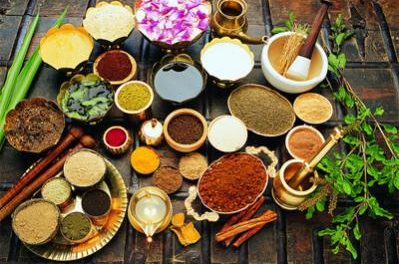






would like to receive regular bulletins. Thanks
Chickpeas are best eaten with gas-reducing spices such as cumin or carraway. Enjoy!
Nice!,